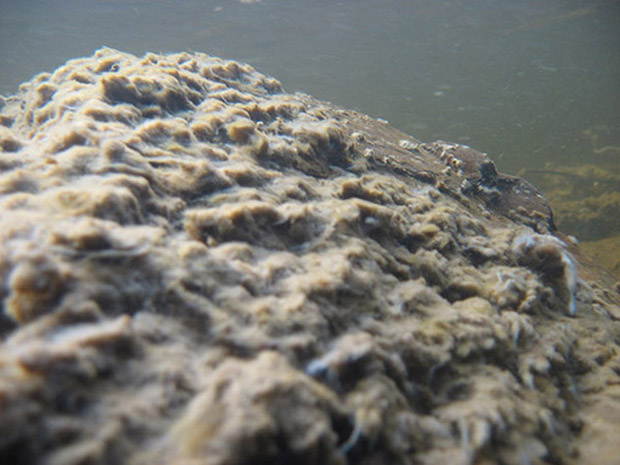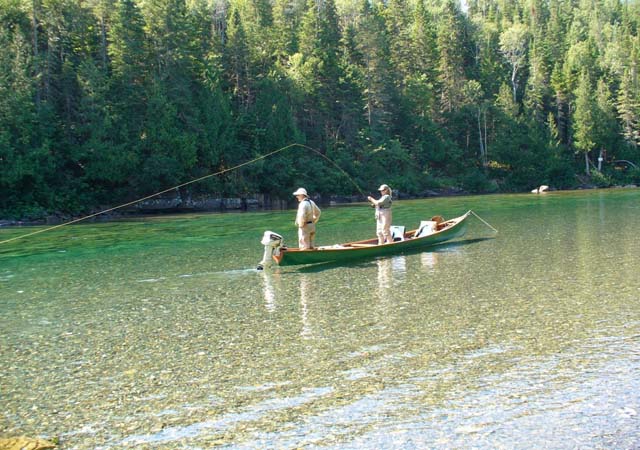[dropcap]D[/dropcap]idymo growing in the Matapedia River, forming the dense mats that raise concerns about smothering Atlantic salmon habitati. (ASF photo)
Most Atlantic salmon anglers have come across the name of this alga, Didymosphenia geminata, alias Didymo, alias Rock Snot. It brings vividly to mind great mats of brown furry stuff, the ends of which break off and drift downstream to infect other areas of a salmon river.
The concern, certainly real, has been the potential for smothering areas where Atlantic salmon eggs have been laid, as well as impacting the overall food web within the streams that could affect growing young fry and parr.

Didymo growing in the Matapedia River, forming the dense mats that raise concerns about smothering Atlantic salmon habitat. (ASF photo).
Anglers have taken the brunt of accusations when it came to spreading this nasty stuff from river to river. Long and persuasive arguments have been made to change out the felt-solded hip waders for alternate gripping soles. But a major new scientific paper published this spring brings that into question.
The research showed that Didymo has been in these same rivers for centuries. What is different is that apparently earlier springs, changes in nutrient ratios, and warmer summers have modified the growth form. It takes the view that anglers are not a vector for an alien species, but instead climate change is the culprit. Check out the article, that can be downloaded, in the Canadian Journal of Fisheries and Aquatic Sciences.



